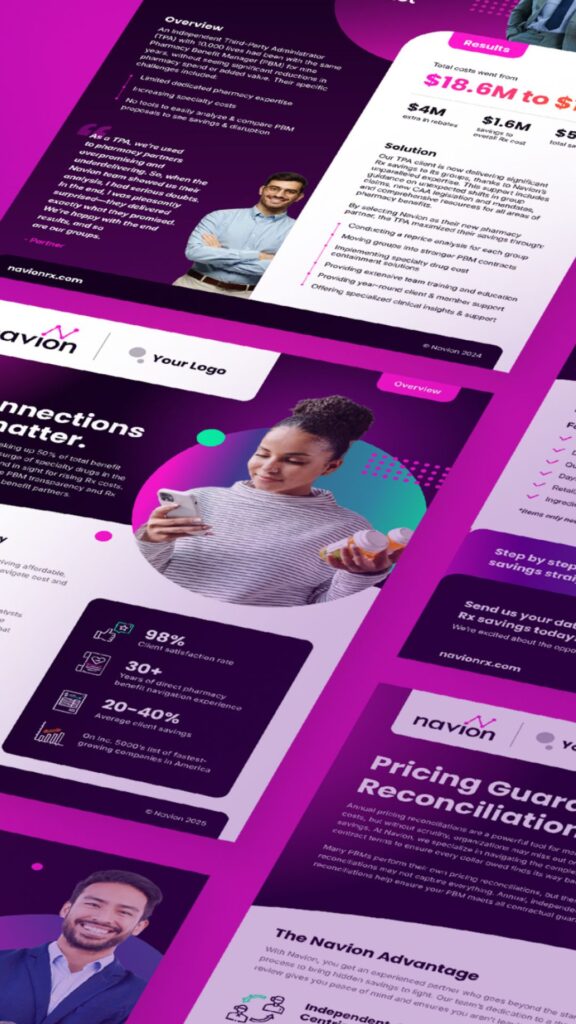By Kevin Kobielski, President of Navion
Ten years ago, pharmacy benefits were an important—but manageable—slice of the healthcare pie. Today, they’re the pie. For many employer groups, prescription drugs now make up more than 50% of total healthcare spend. And that percentage is only climbing.
Yet while health plans and networks often receive intense scrutiny during renewals, the PBM decision is still treated like a line item—an afterthought, a spreadsheet, a “plug and play.” That approach is becoming dangerously outdated.
The PBM Isn’t Just a Vendor—It’s the Backbone of the Plan
Your PBM determines which drugs your employees can access, how much they pay, what adherence strategies are in place, and how specialty medications are handled. It sets the tone not just for your pharmacy costs—but for your member experience and clinical outcomes.
Choosing the wrong PBM doesn’t just mean missing out on rebates. It means your people might not get the medications they need, or that your plan could be paying $8,000 for a drug when there’s a therapeutically equivalent version available for $3,000. Or even less.
Transparent vs. Traditional: That’s Not the Whole Story
Much has been written about transparent versus traditional PBM models. But this binary framework oversimplifies what is actually a deeply nuanced decision. Some employers prioritize visibility. Others want flexibility. Others still simply want the best net cost, regardless of the model.
The truth? There are well-structured contracts—and poorly structured ones—on both sides of the aisle. A transparent contract that overcharges for unit costs can be just as problematic as a traditional one with hidden exclusions.
What matters most is not the label, but the details:
- Are the financial terms clearly defined and auditable?
- Are rebate guarantees meaningful—or full of exclusions?
- Is the formulary clinically sound and cost-effective?
- Can third-party cost-containment programs be added?
The Gap Between Perception and Reality Is Widening
Too often, the optics of a PBM deal obscure the underlying economics. A spreadsheet might show one deal with a rebate guarantee of $400 per claim, and another at $300. But what if half the drugs that generate the $400 rebate are excluded from the guarantee? Suddenly the stronger deal is anything but.
What This Means for Employers
As pharmacy spend becomes a larger share of the total healthcare dollar, the consequences of a misstep grow sharper. A poor PBM fit doesn’t just impact financials—it affects the quality of care, employee satisfaction, and the employer’s ability to offer competitive, sustainable benefits.
Employers don’t need to become PBM experts overnight. But they do need to ask the right questions. Here are just a few:
- How are high-cost therapies managed?
- What assumptions are baked into the rebate numbers?
- Are there programs to minimize specialty waste (like 30-day vs. 90-day fills)?
- Are audit rights and market checks built into the contract?
Because the truth is: the most important benefits decision might not be your network or your deductible. It might be your PBM—and the fine print that determines how much value you actually get from the contract.










